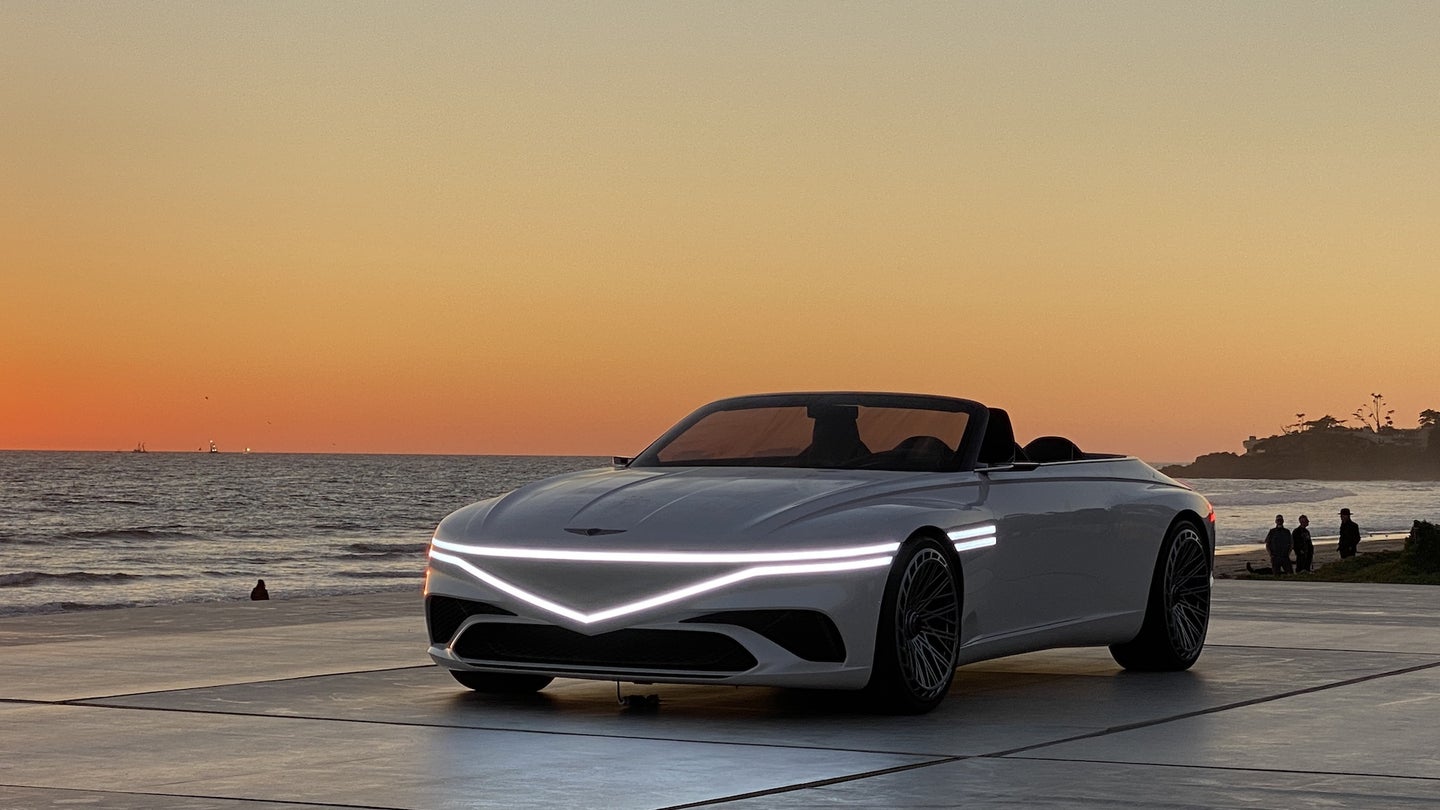How concept cars hint at a dazzling automotive future
Some concept cars never become production models, while others are more art than anything else. Here's why car makers create them.

Concept cars are designed to be flights of fancy—showpieces that give automakers the chance to put their creativity on display. Quite often, a concept car represents just a blip on a timeline and a blast of buzzy excitement, later shelved in a museum for all of us to marvel at a company’s foresight or folly.
A concept, by definition, is an idea; in this case, a concept car is an idea that takes the temperature of the public to see how buyers might react to a set of features and designs. Automakers don’t necessarily release a concept every year, and they have to balance the cost of building a vehicle that may or may not ever see the light of the production line. While it’s true that some concepts fade into oblivion, others become successful models that carry many of the same characteristics as the concept. Even those that are wildly futuristic and wacky lay the groundwork for innovations to come.
Most recently, truck maker Ram announced the 1500 Rev, the production version of its Revolution EV concept. The Revolution (not the Rev) was unveiled at the Consumer Electronics Show in January, with some exciting features, like coach doors (which open at the center like French doors in a home), and a glass roof that adjusts its tint electronically. But when the production version launched at the Chicago Auto Show in February, some expressed disappointment in how much it looked like its gas-powered sibling. Where were the cool removable third-row seats from the concept? Where was the storage tunnel to hold long objects?
To be fair, automakers—especially when they’re large, public companies—are beholden to not just manufacturing and safety regulations but their shareholders. In the case of the Ram 1500 Rev, the company will build the production vehicle on the new all-electric architecture from its parent company Stellantis instead of the one used by the gas version of the 1500 truck.
Otherworldly concepts
There’s a long history of wild concept cars, many of which never became actual production models.
Consider the otherworldly Berlinetta Aerodynamica Tecnica series commissioned by luxury automaker Alfa Romeo in the mid-1950s. These three cars featured unusual, gorgeous bodies that evoke sea creatures in motion. And somehow, all of them survived in remarkable shape and sold as a set for more than $14 million at auction in 2020. These concepts, which never became production vehicles, were more art than realism, unlike recent modern offerings.
In 2021, Genesis unveiled its X Concept EV, a sleek coupe with wraparound parallel LED lights defining its curves. Last year, it followed up with the X Concept convertible that peeled back the top and showed off more futuristic details. To our great joy, Automotive News reported that the X Convertible recently got the green light for official production.
Also under the Hyundai Motor Group, Kia introduced a streamlined concept in 2011 that eventually gave way to the Stinger, which was widely lauded by the industry as a game-changer for the Korean manufacturer. Engineered by a former BMW vice president of engineering and sketched out by celebrated former Audi designer, the Stinger was finally launched to the world in 2017. It was taller than the concept and included more buttoned-down design features on the outside, but under the hood the performance was impressive, especially the 365-horsepower GT model. A moment of silence for the now-discontinued Stinger, please. Hope springs eternal, as rumors of an all-electric Stinger have been swirling.
On the gas-powered side, the raw and rowdy Dodge Viper started life as a concept showcased for the first time at the 1989 Detroit auto show. Using an existing truck engine as its base, the concept evolved over three years into the 1992 Viper RT/10 and delighted fast-car enthusiasts for more than two and a half decades until it was discontinued in 2017.

From Revolution to Rev
In the same automotive manufacturing family as the Viper, the Ram 1500 Rev moved quickly from concept to production. And while the Rev may not be exactly the same as the Revolution, it retains the benefit of sharing some parts with the gas-powered Ram 1500 pickup. That will both speed production and keep the cost on the manageable side. Ford did the same thing for its F-150 Lightning, which is purposely built to feel familiar to F-150 customers to avoid alienating its loyal base.
The 1500 Rev will not be equipped with the removable jump seats from the concept, which could have turned the Ram pickup into the first third-row truck. Ryan Nagode, Ram/SRT’s chief designer for interiors, was inspired to add the track seating when he noticed parents hauling around stadium seats to make hours of sitting on the bleachers at their kids’ sporting events more comfortable. He wondered if something like that could be incorporated into the truck and successfully integrated the idea into the cabin of the Revolution concept.
“There have been vehicles in the past with jump seats, and I think there is a lot of reality built into these ideas,” Nagode told PopSci at the Concept Garage of the Chicago Auto Show in February. “Obviously, some of these things take a little pushing and pulling with the engineering team, but I think it’s not far-fetched.”
Alas, those seats won’t be included in the Rev, but the seeds of creativity could feasibly show up sometime in the future.
